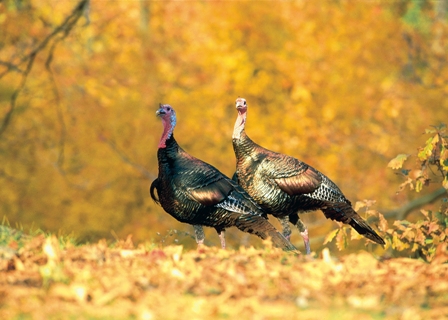
As the leaves quietly drift downward through the trees and autumn's cool days approach, most of Mississippi's hunters turn their minds toward deer, ducks, squirrels, and rabbits. Except for the handful of hunters who take advantage of our limited fall turkey season, most turkey enthusiasts spend little time worrying about the wily birds until the approach of spring.
However, the fall/winter period is an important time in the annual cycle of the bird, and the habits exhibited by fall turkeys make them seem to be a different bird than the one with which most spring hunters are accustomed. The following glimpse into the secretive lives of fall turkeys will hopefully cast them in a new light and may render a renewed appreciation for the birds during a time when deer dominate the minds of most Mississippi hunters.

Changing Seasons
One of the most common statements voiced by turkey hunters is, "I saw turkeys all winter during deer season, but I can't find them during spring." The reason for this complaint is simple: The birds focus on different habitats at different times of the year. Throughout the spring and summer, turkeys spend a large portion of their time around fields and open woods that contain low-growing grassy and weedy vegetation. However, the changing seasons mark a time of transition for most turkey populations. The insects, seeds, and leafy vegetative growth that sustained the birds during the summer in open areas begin to decline as the days grow shorter. At the same time, more hard and soft mast becomes available in mature forests. In many areas, this disparity causes a dramatic shift in the home ranges of turkeys.
Beginning in September, turkeys begin to gradually reduce their use of open habitats and shift their ranges into areas of mature forests. Home range shifts of up to several miles are not uncommon, though the distance that turkeys will move often depends on the success of the acorn crop and the proximity of mature forests. By early November, the birds will spend nearly all of their time within mature woods, and they will remain there until late February.